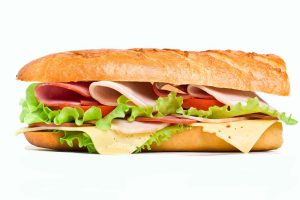The high sugar levels in Subway rolls means it is not bread, an Irish court has ruled.
This week, a judge ruled the bread used by Subway cannot be classed as bread due to its sugar content. Instead, the judgement stated that it qualifies as confectionery.
The ruling followed an appeal lodged by Bookfinders Ltd, the Irish franchisee of Subway. It argued that because the bread used counts as a staple food, it should be exempt from VAT.
But in line with Irish law, the amount of sugar in bread should not exceed 2% of the weight of the flour in the dough. In the rolls used for Subway’s sandwiches, this stands at 10%, which is more than five times the stipulated limit.
No dispute
The ruling states: ‘In this case, there is no dispute that the bread supplied by Subway in its heated sandwiches has a sugar content of 10% of the weight of the flour included in the dough, and thus exceeds the 2% specified.’
A six inch sub roll from Subway contains 5g of sugar – more than a milk chocolate digestive biscuit, which contains 4.8g.
Mr Justice O’Donnell said: ‘The argument depends on the acceptance of the prior contention that the Subway heated sandwich contains “bread” as defined, and therefore can be said to be food for the purposes of the Second Schedule rather than confectionery.
‘Since that argument has been rejected, this subsidiary argument must fail.’
































